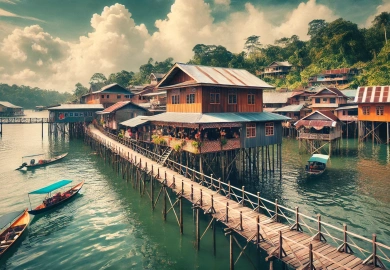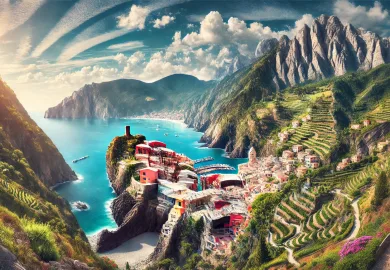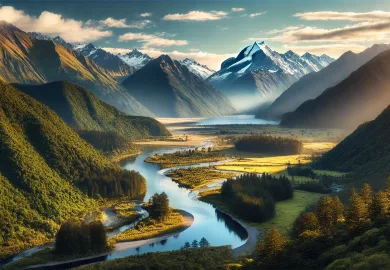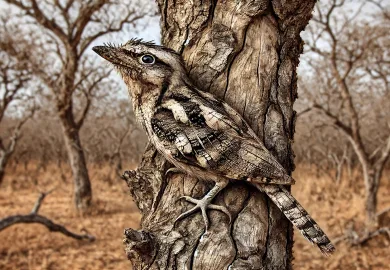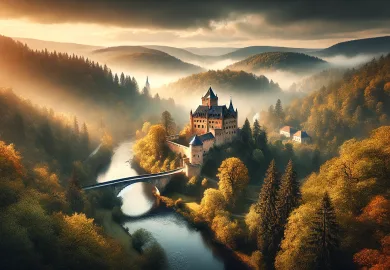
Disclaimer: This content was generated using AI. While I strive for accuracy, I encourage readers to verify important information. I use AI-generated content to increase efficiencies and to provide certain insights, but it may not reflect human expertise or opinions.
Iceland, a land of fire and ice, is not only known for its stunning landscapes but also for its rich Viking heritage. For centuries, the island has captivated the imagination of travelers with its tales of Norse explorers, sagas, and breathtaking natural wonders. Today, exploring the Viking route in Iceland offers a unique blend of history, culture, and scenic beauty that is sure to leave an indelible mark on any visitor.
This guide will take you through some of the most significant Viking sites and landscapes in Iceland, providing an immersive experience that intertwines the past with the present. Whether you’re an avid history buff or simply in search of awe-inspiring scenery, following the Viking route in Iceland is an adventure not to be missed.
Unveiling Iceland’s Viking Heritage: Key Historical Sites
Iceland’s Viking history dates back to the late 9th century when Norse settlers first arrived on the island. The tales of these early settlers are preserved in the Icelandic sagas, which offer a vivid glimpse into the lives, battles, and explorations of the Vikings.
One of the most iconic historical sites linked to the Viking era is Þingvellir National Park, a UNESCO World Heritage site. Þingvellir is where the Althing, one of the oldest parliaments in the world, was established around 930 AD. Here, Viking chieftains and leaders would gather to discuss laws, settle disputes, and make critical decisions for the Icelandic Commonwealth. Walking through Þingvellir is like stepping back in time, with its dramatic landscapes of rift valleys, waterfalls, and cliffs adding to the historic ambiance.
Another must-visit site on the Viking route is the Settlement Exhibition in Reykjavik. Located in the heart of Iceland’s capital, this museum offers a deep dive into the country’s Viking origins. The exhibition is built around the remains of a longhouse dating back to the 10th century, providing a tangible connection to the past. Interactive displays, artifacts, and multimedia presentations make it a captivating experience for visitors of all ages.
Finally, don’t miss a visit to the Saga Museum, also located in Reykjavik. This museum brings the Viking sagas to life through lifelike wax figures, detailed dioramas, and engaging storytelling. It offers a comprehensive overview of the most famous Viking tales, including the journeys of Leif Erikson, who is believed to have discovered North America centuries before Columbus.
The Majestic Landscapes Along the Viking Route
While Iceland’s Viking history is fascinating, the landscapes that surround these historical sites are equally mesmerizing. The Viking route takes you through some of Iceland’s most stunning natural wonders, each offering a unique glimpse into the country’s diverse geography.
The Golden Circle is a popular route that includes Þingvellir National Park, Geysir Geothermal Area, and Gullfoss Waterfall. As you drive through this route, you’ll witness the raw power of nature, from erupting geysers to cascading waterfalls, all set against a backdrop of volcanic mountains and expansive plains. This area is not only significant historically but also offers some of the most photogenic landscapes in Iceland.
Further along the Viking route, you’ll encounter the Reykjanes Peninsula, a region rich in geothermal activity and rugged beauty. The peninsula is home to the famous Blue Lagoon, a geothermal spa that has become one of Iceland’s most iconic attractions. But beyond the lagoon, the peninsula offers dramatic coastal cliffs, bubbling mud pools, and volcanic craters that are sure to capture your imagination.
No Viking route in Iceland would be complete without a visit to the Westfjords, a remote and wild region that feels like a world unto itself. The Westfjords are known for their steep fjords, towering mountains, and secluded beaches. This area is also steeped in Viking history, with numerous sites linked to the sagas and the early settlers. The journey to the Westfjords may be challenging, but the reward is an unparalleled sense of adventure and connection to the natural world.
Iceland’s Viking Sagas: Stories Carved in Stone
The Icelandic sagas are among the most important literary works of the Viking Age, and they provide invaluable insights into the lives of the Norse settlers. These stories, which were passed down orally before being written down in the 13th century, are deeply intertwined with Iceland’s landscape and culture.
One of the most famous sagas is the Saga of Egil Skallagrímsson, which tells the tale of a warrior-poet and his family. The saga is set in various locations across Iceland, and many of these places can still be visited today. For example, Borgarnes in West Iceland is home to the Settlement Centre, where you can learn more about Egil and other figures from the sagas through interactive exhibits and multimedia displays.
Another significant saga is the Laxdæla Saga, which is set in the Dalir region of West Iceland. This saga follows the lives of several generations of one family and is filled with love, betrayal, and revenge. The region itself is rich in Viking history, with numerous archaeological sites, including the remains of longhouses and burial mounds, providing a direct link to the past.
Finally, the Njáls Saga, one of the longest and most complex of the Icelandic sagas, is set in South Iceland. The saga revolves around themes of honor, family loyalty, and the cycle of vengeance, and it is considered one of the finest examples of medieval literature. The sites associated with the Njáls Saga, such as the farm at Bergþórshvoll and the area around Hvolsvöllur, offer a fascinating glimpse into the world of the Vikings.
Practical Tips for Exploring Iceland’s Viking Route
Embarking on a journey along Iceland’s Viking route requires some planning, especially if you want to make the most of your experience. Here are some practical tips to help you along the way:
First, consider the time of year you plan to visit. Iceland’s weather can be unpredictable, with winter bringing heavy snow and challenging driving conditions, especially in remote areas like the Westfjords. Summer, on the other hand, offers long daylight hours and milder temperatures, making it an ideal time to explore the Viking route.
Second, renting a car is highly recommended for this journey. While some of the sites along the Viking route are accessible by public transport, having your own vehicle gives you the freedom to explore at your own pace and venture off the beaten path. Be sure to rent a 4×4 vehicle if you plan to visit more remote areas, as some roads can be rough and unpaved.
Lastly, take the time to immerse yourself in the local culture. Icelanders are proud of their Viking heritage, and you’ll find that many locals are eager to share stories and recommendations about historical sites and natural attractions. Staying in local guesthouses, visiting small museums, and sampling traditional Icelandic cuisine are all great ways to enhance your experience.
Conclusion: A Journey Through Time and Nature
Exploring the Viking route in Iceland is more than just a historical tour; it’s a journey through time and nature that allows you to connect with the island’s rich cultural heritage and breathtaking landscapes. From the ancient gathering place of Þingvellir to the remote beauty of the Westfjords, the Viking route offers an unforgettable adventure that will leave you with a deeper appreciation of Iceland’s unique history and natural wonders.
Whether you’re standing in the shadow of a volcanic crater or tracing the steps of Norse explorers, the Viking route promises an experience that is both educational and awe-inspiring. So pack your bags, rent a car, and set off on a journey that will take you back to the age of the Vikings and beyond.


